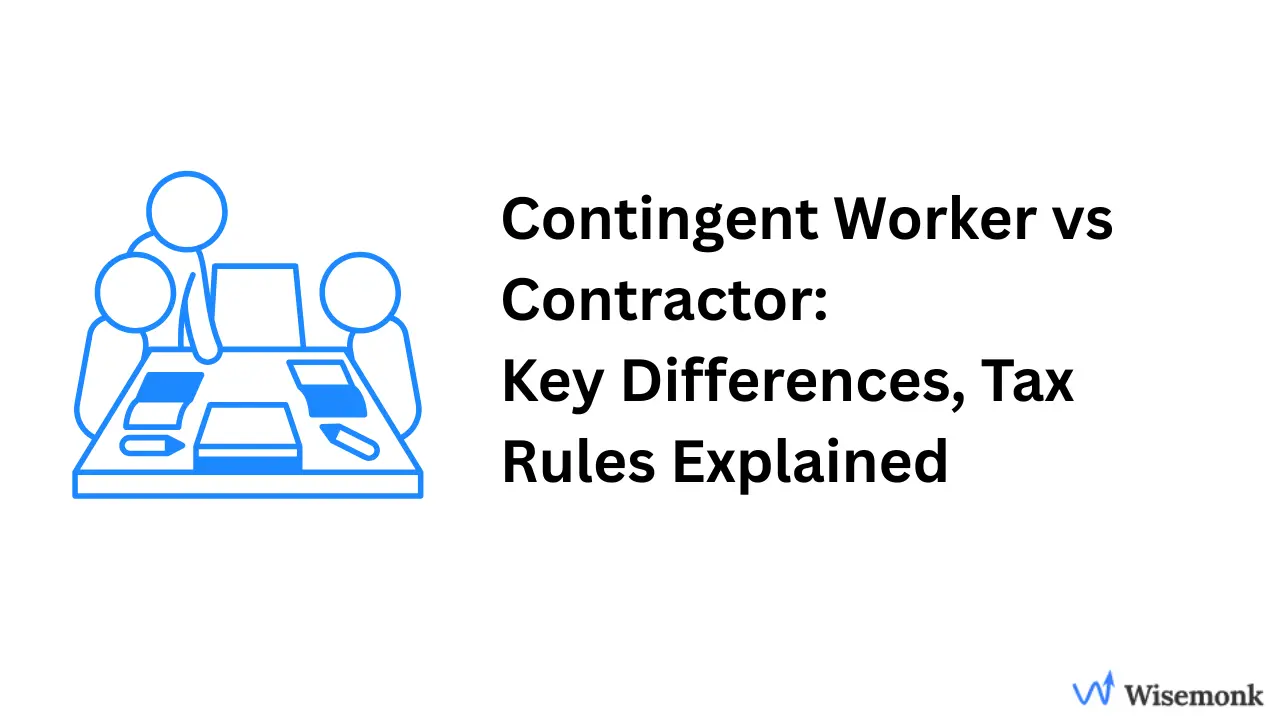As an independent contractor in India, you are a worker who is paid to provide services or products to another party but are not considered an employee of that party. You are often hired on a project-by-project basis and have more flexibility than employees, but you are also typically not entitled to the same benefits. This definition is based on the 1970 Contract Labor Act, which outlines the legal framework for hiring independent contractors in India.
As the global economy continues to evolve, foreign businesses are increasingly looking to India as a hub for outsourcing and offshoring. One of the primary reasons for this trend is the cost-effectiveness of hiring contractors like you in India. However, as foreign businesses navigate the complexities of hiring contractors in India, it is essential for them to understand the legal framework governing independent contractors in India.
For companies looking to expand their workforce in India, understanding the legal framework governing independent contractors is crucial. However, navigating the complexities of Indian labor laws can be daunting. Fortunately, there are specialized services like PEO India and Employer of Record India that can simplify this process, offering compliance assurance, payroll management, and employee benefits administration.
Key Characteristics of Independent Contractors in India
As an independent contractor in India, you are characterized by your autonomy and flexibility in determining how to complete your work and when to do it. You are typically hired on a project-by-project basis and are responsible for your own taxes and benefits. Independent contractors in India can be self-employed individuals, consultants, or freelancers.
Examples of Independent Contractors in Tech Industries and Professional Services Industry
In the tech industry, examples of independent contractor include:
- Software developers who work on specific projects for a company
- Data analysts who provide analysis services to a company
- Cybersecurity experts who offer their services to a company for a specific period
In the professional services industry, examples of independent contractors include:
- Lawyers who work on specific cases for a company
- Accountants who provide accounting services to a company
- Marketing consultants who offer their services to a company for a specific period
These professionals are hired by companies to provide specific services, and they are not considered employees of those companies. They are responsible for their own taxes and benefits, and they are typically hired on a project-by-project basis.
To put it in simple words, as an independent contractor in India, you are an individual who provides services to a business or organization but are not an employee of that business or organization. You are characterized by your autonomy and flexibility in determining how to complete your work and when to do it.
Independent Contractor vs Employee
Understanding the distinction between an employee and an independent contractor is crucial for you as a contractor. This differentiation impacts your autonomy, tax obligations, and the way you manage your work. Proper classification ensures you maintain control over your schedule and tasks, while also protecting your rights under the law.
When businesses choose to hire independent contractors in India, they must ensure proper classification to avoid misclassification penalties. However, for those seeking more control over their workforce, considering Hiring Employees in India through a service like an EOR India or PEO Services in India can be an effective solution. These services handle all employment-related tasks, allowing businesses to focus on their core activities while ensuring adherence to local employment laws.
Misclassification can lead to issues with taxes and benefits, so it's essential to be clear about your status. Check the table below to see key factors that help determine whether you're correctly classified as a contractor.
Legal Framework for Independent Contractors in India
As an independent contractor in India, it's crucial for you to understand the legal framework governing your working relationship with clients.
The Indian Contract Act, 1872
The Indian Contract Act, 1872 lays the foundation for all your contractual relationships, defining the essential elements of a valid contract. Ensure your agreements comply with these requirements and clearly define the scope of work, payment terms, and other essential clauses to avoid disputes.
The Contract Labor (Regulation and Abolition) Act, 1970
The Contract Labor (Regulation and Abolition) Act, 1970 regulates the employment of contract labor in certain establishments. If you work with a company that employs 20 or more contract laborers, they must register with the appropriate authorities and obtain a license. As a contractor, you must also ensure compliance with the Act's provisions, such as proper working conditions and timely payment of wages.
Recent Labor Codes and Their Impact on Independent Contractors
Recent labor codes, such as the Code on Wages, 2019 and the Industrial Relations Code, 2020, have introduced changes that impact you as an independent contractor. The Industrial Relations Code, 2020 allows companies with up to 300 workers to lay off, retrench, or close down without government permission, which may affect your job security.
Be aware of the new definition of "wages" and its impact on your compensation structure. The Code on Wages, 2019 introduces a uniform definition of "wages" that includes basic pay, dearness allowance, and retaining allowance. It excludes certain components like house rent allowance, overtime allowance, and commissions. This new definition requires that at least 50% of your total remuneration be classified as "wages." As an independent contractor, you should review your contracts and payment terms to ensure they align with this new definition and understand how it might affect your overall compensation and tax liabilities.
What are the different business structure options for independent contractors in India?
As an independent contractor in India, you have several options for structuring your business. The most common and straightforward approach is to operate as an individual without registering a company, which is essentially functioning as a sole proprietorship. However, there are other business structures available if you're looking for different benefits or planning to scale. Let's explore the options:
- Sole Proprietorship (Individual Contractor)
- One Person Company (OPC)
- Partnership (General Partnership & LLP)
- Private Limited Company (PLC)
Sole Proprietorship (Individual Contractor)
Operating as an individual contractor is the simplest and most common way for independent contractors like you to work in India. This is essentially a sole proprietorship where you have full control of your business activities. There's no need to register a separate company, making it the easiest to set up and manage. You have full control of the enterprise, although there is no legal separation between you (the owner) and the business. You're personally responsible for all its debts and liabilities.
One Person Company (OPC)
An OPC is a relatively new business structure introduced in India through the Companies Act, 2013. It allows you to create a separate legal entity with limited liability protection while maintaining complete control over the business.
Partnership
A partnership is an arrangement where two or more individuals, like you, share the profits, losses, and management of a business. There are two main types of partnerships:
- General Partnership: In a general partnership, all partners have unlimited personal liability for the debts and obligations of the business.
- Limited Liability Partnership (LLP): An LLP offers limited liability protection to its partners, meaning your personal assets are protected from business debts and liabilities.
Private Limited Company (PLC)
A PLC is a separate legal entity with limited liability protection for its shareholders. It offers a more formal structure and is suitable for independent contractors like you who want to scale their business and attract investors.
When choosing a business structure, consider factors such as your business goals, the level of liability protection you need, compliance requirements, and taxation implications. For most independent contractors, a sole proprietorship or an OPC may be the most suitable options, as they offer simplicity and control. However, if you plan to scale your business or work with partners, an LLP or PLC may be more appropriate.
How do independent contractors register their business in India?
To operate legally as an independent contractor in India, you need to complete the following registration process:
- Obtain a Personal Account Number (PAN) and Aadhaar card number, which are essential for tax purposes and identity verification.
- Open a bank account in your business name to separate your personal and business finances.
- Obtain necessary business licenses and permits, depending on your industry and location.
- Choose a business name that is unique and not already registered by another entity.
- Register for Goods and Services Tax (GST) if your annual turnover exceeds the threshold (currently ₹20 lakh, or ₹40 lakh for certain goods).
To register for GST, you need to visit the official GST portal, fill out the online application form, and submit the required documents. Once your application is approved, you'll receive a GST Identification Number (GSTIN), which you must use for all your business transactions.
By completing these registration formalities, you'll ensure that your independent contracting business is legally compliant and ready to operate in India.
How do I get paid as an independent contractor in India?
As an independent contractor in India, it's essential for you to understand the payment process:
- You'll typically be paid after submitting an invoice, either at the end of the project or at regular intervals throughout the project.
- Ensure your invoice includes all necessary details, such as your name, contact information, invoice number, and a breakdown of the services provided.
- Discuss payment terms and methods with your client before starting the project to avoid any misunderstandings.
- Keep accurate records of your invoices and payments for tax purposes and to ensure you're being paid fairly and on time.
For more detailed information on how to pay contractors in India, including the various payment methods available, tax implications, and best practices, check out this comprehensive article by Wisemonk on how to pay contractors in India.
What are the Tax Brackets for Independent Contractors in India?
As an independent contractor in India, you're responsible for managing your own taxes. This includes filing income tax and, if applicable, GST annually. The amount of income tax you pay depends on the type of contractor you are. For professionals like doctors or lawyers earning up to ₹75 lakhs per year, the Presumptive Taxation Scheme allows you to claim 50% of your income as expenses, meaning only the remaining 50% is taxable.
Once you've determined your taxable income, you can choose between the Old or New Tax Regime, each with different tax slabs. This choice will affect how much tax you ultimately pay. It's important to understand these options to optimize your tax liability and ensure compliance with Indian tax laws.
Read on to learn more about taxes for independent contractors in India, and how you can make informed decisions to optimize your tax liability
Taxes for Independent Contractors in India
Taxes for independent contractors depend on various factors, including the nature of their work, income level, and chosen tax regime. Understanding these factors is crucial for proper tax planning and compliance.
Types of Contractors
- Professional Services (e.g., lawyers, doctors, engineers, architects)
- Small Businesses (e.g., retailers, service providers)
Presumptive Taxation Scheme
The presumptive taxation scheme is a significant factor in determining taxable income for both professionals and small businesses. This scheme simplifies tax calculations and reduces the compliance burden.
Example Calculation: Taxable and Non-Taxable Amount
Let's consider an example for both individual professionals and small businesses:
- Individual Professional (e.g., a lawyer):
- Total gross receipts: ₹50,00,000
- Presumptive income (50%): ₹25,00,000 (taxable amount)
- Presumed expenses (50%): ₹25,00,000 (non-taxable amount)
- Small Business:
- Total turnover: ₹1,00,00,000
- Presumptive income (8%): ₹8,00,000 (taxable amount)
- Presumed expenses (92%): ₹92,00,000 (non-taxable amount)
Tax Regime Choice: Old vs. New
After calculating the taxable amount, contractors can choose between the Old and New Tax Regimes to determine their income tax liability. The New Tax Regime, introduced in the Finance Act 2020, offers an alternative to the Old Tax Regime with different tax slabs and rates.
The New Tax Regime aims to simplify the tax structure by reducing the number of deductions and exemptions available to taxpayers. Contractors should carefully evaluate their income, investments, and eligible deductions to determine which regime is more beneficial for their specific situation.
Old Tax Regime (with deductions)
Under the Old Tax Regime, contractors can benefit from various deductions that can significantly reduce their taxable income. Deductions available under Sections 80C (investments in specified instruments like PPF, NSC, life insurance premiums, and ELSS), House Rent Allowance (HRA), and Leave Travel Allowance (LTA) can be claimed to lower taxable income.
By maximizing these deductions, contractors can effectively manage their tax liability and ensure they pay only the required amount based on their overall earnings and eligible deductions. It's essential to keep proper documentation for these claims, as they play a crucial role in tax assessment.
In both tax regimes, surcharges are applicable on the income tax based on the total income level. These surcharges are in addition to the base tax rates and can significantly increase the overall tax liability for high-income earners. The surcharge rates range from 10% to 37%, depending on the income slab and the chosen tax regime. Contractors should carefully consider the impact of surcharges when estimating their tax liability and making decisions related to their income and investments.
Example Calculation of Income Tax
Using the individual professional example from earlier:
Taxable income: ₹25,00,000
Under Old Tax Regime:
- First ₹2,50,000: Nil
- Next ₹2,50,000: ₹12,500 (5%)
- Next ₹5,00,000: ₹1,00,000 (20%)
- Remaining ₹15,00,000: ₹4,50,000 (30%)
- Total tax: ₹5,62,500 (plus applicable cess)
Under New Tax Regime:
- First ₹3,00,000: Nil
- Next ₹4,00,000: ₹20,000 (5%)
- Next ₹3,00,000: ₹30,000 (10%)
- Next ₹2,00,000: ₹30,000 (15%)
- Next ₹3,00,000: ₹60,000 (20%)
- Remaining ₹10,00,000: ₹3,00,000 (30%)
- Total tax: ₹4,40,000 (plus applicable cess)
Goods and Services Tax (GST)
Independent contractors in India must register for GST if their annual turnover exceeds ₹20 lakhs (₹10 lakhs for special category states). Most freelance services attract an 18% GST rate, which contractors charge from clients and deposit with the government. However, the export of services is considered a zero-rated supply under GST, meaning no GST is levied on the export of services. Despite this, exporters of services are still required to file GST returns.
Contractors can claim Input Tax Credit (ITC) on GST paid for business expenses. GST-registered contractors must file monthly or quarterly returns (like GSTR-1, GSTR-3B) based on their turnover, along with an annual return summarizing all transactions. Maintaining accurate records and using GST-compliant invoices is crucial for compliance.
Tax Deducted at Source (TDS)
Independent contractors in India are subject to TDS, where clients deduct tax at the prescribed rate before making payments. For professional services, the TDS rate is 10% if the total payment in a financial year exceeds ₹30,000. Clients deposit this TDS with the government, and it is reflected in the contractor's Form 26AS.
Contractors can claim credit for this TDS when filing their income tax returns. If the client doesn't deduct TDS, the contractor is responsible for paying taxes if their income exceeds the basic exemption limit of ₹2.5 lakh.
Tax Deductions and Exemptions
As an independent contractor, you can claim various deductions to reduce your taxable income, such as:
- Business expenses (e.g., office rent, supplies, travel)
- Interest paid on business loans
- Depreciation on assets used for business purposes
- Contributions to tax-saving investments under Section 80C (e.g., PPF, ELSS)
- Deduction of up to ₹50,000 for contribution to NPS under Section 80CCD(1B)
- Health insurance premium paid under Section 80D
Income Tax Return (ITR) Filing
As an independent contractor, you must file your income tax returns using ITR-3 (if maintaining regular books of accounts) or ITR-4 (if opting for presumptive taxation). The due date for filing ITR is July 31 (if not subject to audit) or October 31 (if subject to audit).
In conclusion, as an independent contractor in India, you need to be aware of the applicable tax slabs, presumptive taxation schemes, GST requirements, TDS provisions, and available deductions to ensure proper compliance and tax planning.
Independent Contractor Agreement in India
As an independent contractor, an independent contractor agreement is a legally binding contract between you and a company, outlining the terms and conditions of your working relationship. It defines the scope of work, deliverables, timelines, payment terms, and intellectual property rights that you need to adhere to. The agreement also clarifies that you are not an employee of the company and are responsible for your own taxes and expenses. Drafting a comprehensive agreement is crucial to protect both your interests and the company's, promote accountability, and ensure a smooth collaboration between you and the company.
To learn more about the key components of an independent contractor agreement that you should be aware of, click here to read our blog post.
Transitioning from Independent Contractor to Employee in India
If your working relationship with a client changes over time, you may find yourself transitioning from an independent contractor to an employee. It's essential to recognize these changes and take appropriate action.
- Look out for signs such as increased control over your work, set working hours, and the use of company equipment.
- Approach the conversation with your client professionally, expressing your concerns and the need to reclassify your working relationship.
- Consider using third-party solutions like Wisemonk to ensure compliance with labor laws and protect both parties during the transition.
Conclusion
Navigating the world of independent contracting in India requires a clear understanding of the legal landscape and the risks associated with misclassification. As an independent contractor, it's essential to stay informed about your rights, regularly review your working arrangements, and maintain open communication with clients.
By taking proactive steps to prevent misclassification and utilizing compliant platforms like Wisemonk, you can protect yourself and your clients from potential legal and financial consequences. Remember, staying informed and compliant is key to a successful career as an independent contractor in India.





.webp)

